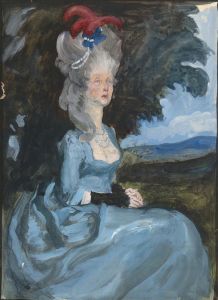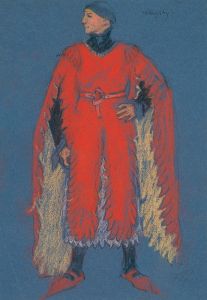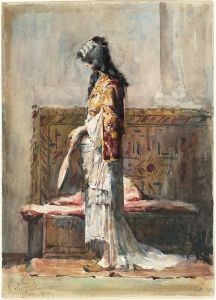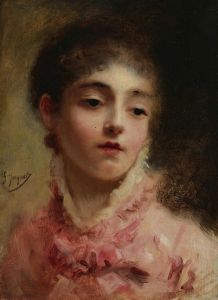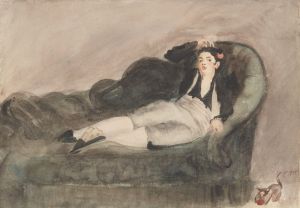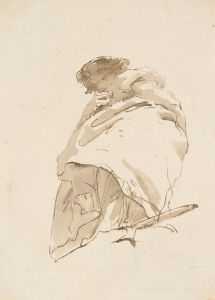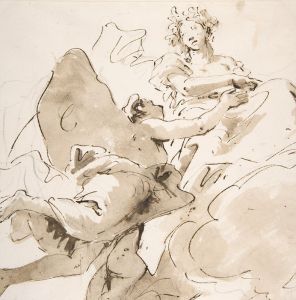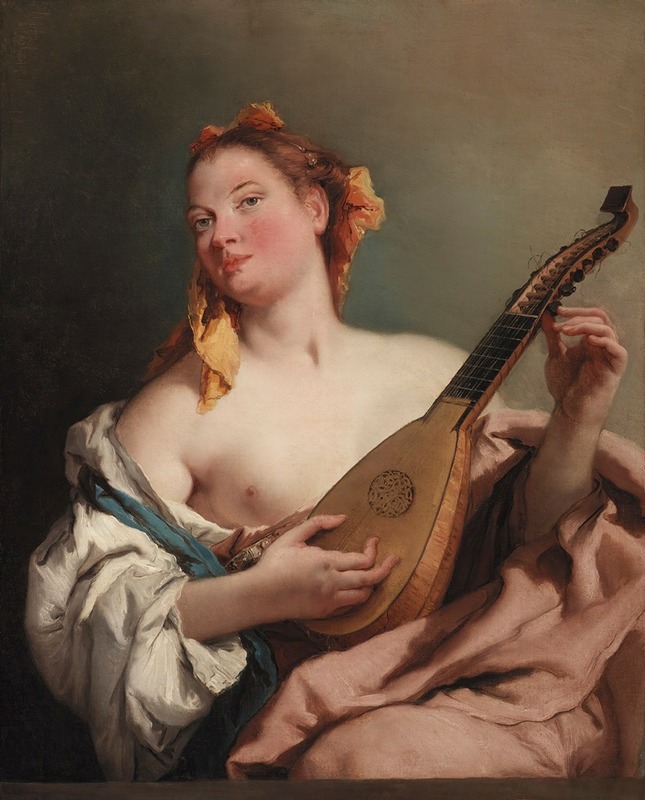
Woman with a Mandolin
A hand-painted replica of Giovanni Battista Tiepolo’s masterpiece Woman with a Mandolin, meticulously crafted by professional artists to capture the true essence of the original. Each piece is created with museum-quality canvas and rare mineral pigments, carefully painted by experienced artists with delicate brushstrokes and rich, layered colors to perfectly recreate the texture of the original artwork. Unlike machine-printed reproductions, this hand-painted version brings the painting to life, infused with the artist’s emotions and skill in every stroke. Whether for personal collection or home decoration, it instantly elevates the artistic atmosphere of any space.
Giovanni Battista Tiepolo, an Italian painter and printmaker, was one of the most prominent artists of the 18th century, known for his grand historical and religious compositions. His work, "Woman with a Mandolin," is a testament to his skill in capturing the elegance and grace of his subjects, although specific details about this particular painting are scarce.
Tiepolo was born in Venice in 1696 and became one of the leading figures of the Venetian school. He was renowned for his frescoes and oil paintings, which often depicted scenes from mythology, history, and religion. His style is characterized by its lightness, vibrant color palette, and dynamic compositions, which were influenced by the works of earlier Venetian masters such as Veronese and Tintoretto.
"Woman with a Mandolin" reflects Tiepolo's ability to infuse his portraits with a sense of liveliness and charm. The painting likely features a female figure elegantly posed with a mandolin, an instrument that was popular in 18th-century Europe and often associated with pastoral and romantic themes. Tiepolo's use of light and shadow would have been employed to highlight the delicate features of the woman and the intricate details of her attire, showcasing his mastery in rendering textures and fabrics.
While specific information about the painting's creation, such as its date and the identity of the sitter, is not well-documented, it can be inferred that Tiepolo's work in portraiture was influenced by his broader artistic endeavors. His portraits often went beyond mere representation, capturing the personality and social status of his subjects. This approach was consistent with the Rococo style, which emphasized elegance, decorative art, and a light-hearted approach to subject matter.
Tiepolo's career was marked by numerous prestigious commissions, both in Italy and abroad. He worked extensively in Germany and Spain, where he was invited to paint frescoes for royal palaces and churches. His ability to adapt his style to suit the tastes and requirements of his patrons made him a highly sought-after artist during his lifetime.
Despite the lack of detailed information about "Woman with a Mandolin," the painting can be appreciated as part of Tiepolo's broader oeuvre, which includes a wide range of subjects and themes. His work remains influential, celebrated for its technical brilliance and the ability to convey a sense of movement and emotion.
Giovanni Battista Tiepolo passed away in 1770, leaving behind a legacy that continues to be studied and admired by art historians and enthusiasts alike. His contributions to the art world, particularly in the realm of fresco painting, have cemented his reputation as one of the great masters of the 18th century. While "Woman with a Mandolin" may not be as widely recognized as some of his larger compositions, it nonetheless represents the elegance and artistic skill that define Tiepolo's body of work.





